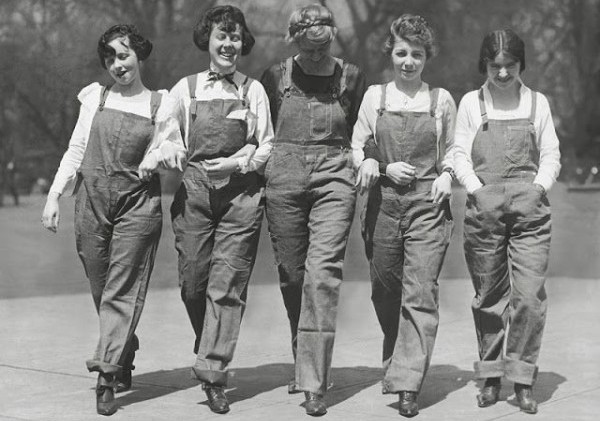The preppy love a skinny dark wash cuffed at the ankle. The edgy go for strategic rips and tears down the leg. Tweens have their jeggings, moms have high waisted and even sweet little grandpas have that cherished pair of overalls.
As one of the most universal wardrobe pieces, a good pair of blue jeans can permeate any stylistic typecast.Despite the realistic differences of individualistic taste, jeans have become a sartorial consensus that most everyone seamlessly blends into their closets.
That is everyone except for me, or, at least, me, freshman year. In my 14-year-old state of mind, I decided that denim was as tacky as gauchos and banished all traces of it from my life. I vowed jeans to be uncomfortable, unflattering and much too basic for my little teenage self to handle. For the next four years, the drought continued until I happened upon the Instagram account of one Karlie Kloss.
There she was, gracing my feed in a sharp moto jacket, slinky top and of course, the elusive pair of jeans. I don’t know if it was Karlie’s impeccable star power or my brain simply giving up after creating outfits without denim for four years, but that it was it. The drought was over. I drove to Target, picked up a pair for $10 and grew an attachment that was weirdly obsessive.
Much to my shock, they miraculously went with everything. In my closet of freaky prints, shoulder pads and layers of fringe, they became a glue that try as I might, could not keep away from the next day’s outfit.
But for being such a simple textile, I wondered how jeans came to have that universal quality. Why not a fresh pair of corduroys, khaki or those popular Juicy Couture velour sweats that we once held so dear?
Well when Levi Strauss was looking for suitable mining attire in 1853, it’s safe to say that Juicy pants may not have fit the bill. He was in search of a material that was tough enough for a long day’s work, soft enough to move with the physicality of his job and cheap enough to be replaced when need be.
His first trial consisted of a brown tent canvas that would barely resemble what we call a pair of jeans today. Let alone being the wrong fabric, the pants were without any pockets, belt loops or even Miss Me jeweled detailing. With time, this changed to denim, (which was dyed indigo), rivets, pocketing and a $69 patent.
Quickly the jeans style became the uniform of a Gold Rush miner, but also many other professions from cowboys to polo players, already establishing its appeal of convenience.
But for denim to transition out of its working class stereotype and into a universal view, it would need another push to be welcomed by other aspects of society. The certain element it was looking for was the cool factor, as perfectly mobilized with the film industry.
When Hollywood starting to become a more relevant aspect of pop culture, the fashion of stars and actors obviously was a huge influx for teen trends. Much like my Kloss-induced eureka moment, James Dean and Marilyn Monroe’s denim costume choices had an instantaneous audience response. Jeans became the “it” piece, simply because it’s what Marilyn Monroe wore, but also what everyone else wore.
The bandwagon factor was essential to the style’s success, allowing it to trickle to various consumer groups and demographics until it became as ingrained in fashion as any other piece.
And that’s how we ended up getting to today, where denim can be found almost anywhere that accepts Visa. Fitted, flared, boot cut or straight, the options are endless and almost dauntingly so.
How they will continue to evolve is the next question, which should be an interesting ride.
An iPhone 13-sized back pocket? A zipper that connects to a hover board? A sewed-in Siri that guides your steps?
Whatever’s in store, I’ll take a fitting room.








